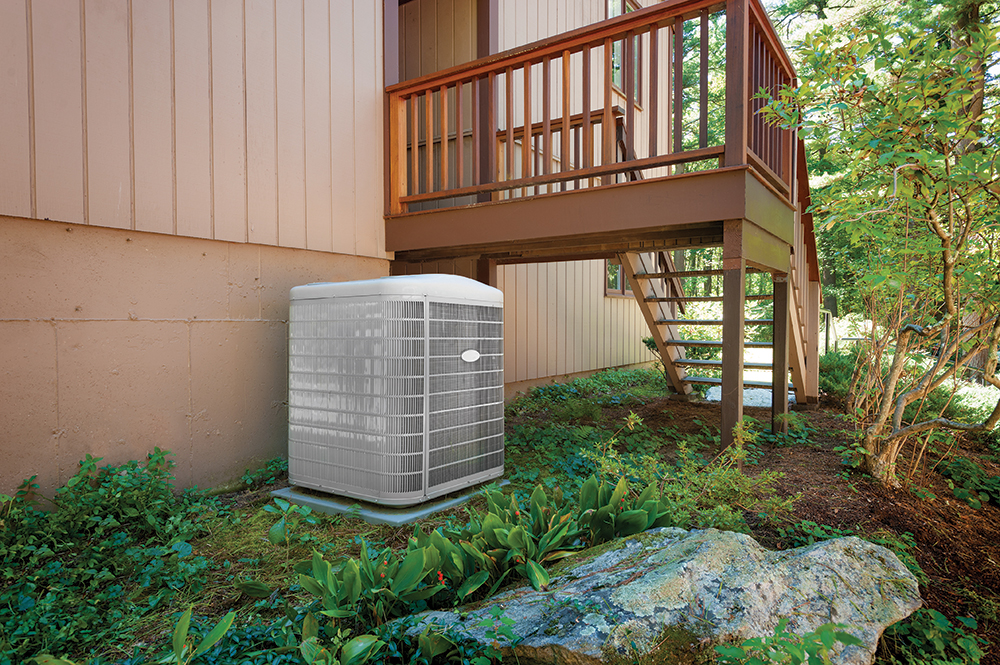Get Pumped: A Guide to Heat Pumps
By Sam Wright | Spring 2019 | Clean Power Guide
In New York State, fossil-fueled heating and cooling systems are responsible for 37 percent of energy consumption and 32 percent of greenhouse gas emissions. Heat pumps are two to four times as efficient as conventional oil, propane, or electric resistance heating. They are also a safer and healthier alternative, with no combustion of fossil fuels, fuel storage, or carbon monoxide emissions. Because they transfer heat rather than burning fuel, the same technology can be adjusted to heat, cool, or dehumidify your building while saving you operating costs.
So, what are the options?
Air source heat pumps (ASHPs) transfer heat between the inside of a building and the outside air using one or more wall units connected to a condenser. While ASHPs are fairly new in the US mass market, they are widely used in Japan and other countries. Recent technological advancements make them work in colder regions like New York.
Ground source heat pumps (GSHPs or Geothermal) transfer heat energy between your building and the ground. Geothermal technology has been around longer in our region, but recent advances have made them operate much more efficiently with a much smaller footprint.
Heat pump water heaters look like a regular water heater with a heat pump on top. They are the smallest investment, the quickest payback way to replace fossil fuel equipment with something cleaner—if the space where you’re installing has a high enough ceiling.
If you’re attracted to these new technologies, the first step is ensuring that your building is well-insulated. A more efficient building takes less work to heat and cool, allowing you to install a more cost-effective system. Heat pump efficiencies fall sharply when they are used in a poorly insulated building. But the investment in energy-efficiency will be your fastest payback and make your building more comfortable.
It’s worth doing homework and finding the right expert to be sure these technologies are a fit for your building. Some air source heat pumps work best in a building with an open floor plan, as nooks and crannies will be the hardest for them to heat. GSHP can work in some retrofit applications but costs can be lower and installation less intrusive in new construction. The best building type for a geothermal retrofit is one with forced hot air and ductwork. In homes with hot water distribution systems, GSHP will only work with low-temperature distribution like radiant heating and some low-temperature hot water baseboards.
Fortunately, there are contractors who have devoted their careers to understanding building energy systems, as well as these specific technologies. NYSERDA maintains a database that is a good starting point, but only a start. Many equipment manufacturers award certifications to contractors who take regular training. Ask for references from customers with buildings as much like yours as possible.
In many parts of the Hudson Valley, free education and group purchase discounts are available on heat pumps and heat pump water heaters through NYSERDA’s Clean Heating and Cooling program.
Learn More about HeatSmart campaigns:
Sullivan and Ulster Counties
Sam Wright | (845) 439-1230
[email protected]
Westchester and Orange Counties
Lauren Brois | (914) 302-7300 ext. 1
[email protected]
NYSERDA
Scott Smith, Program Director
[email protected]
